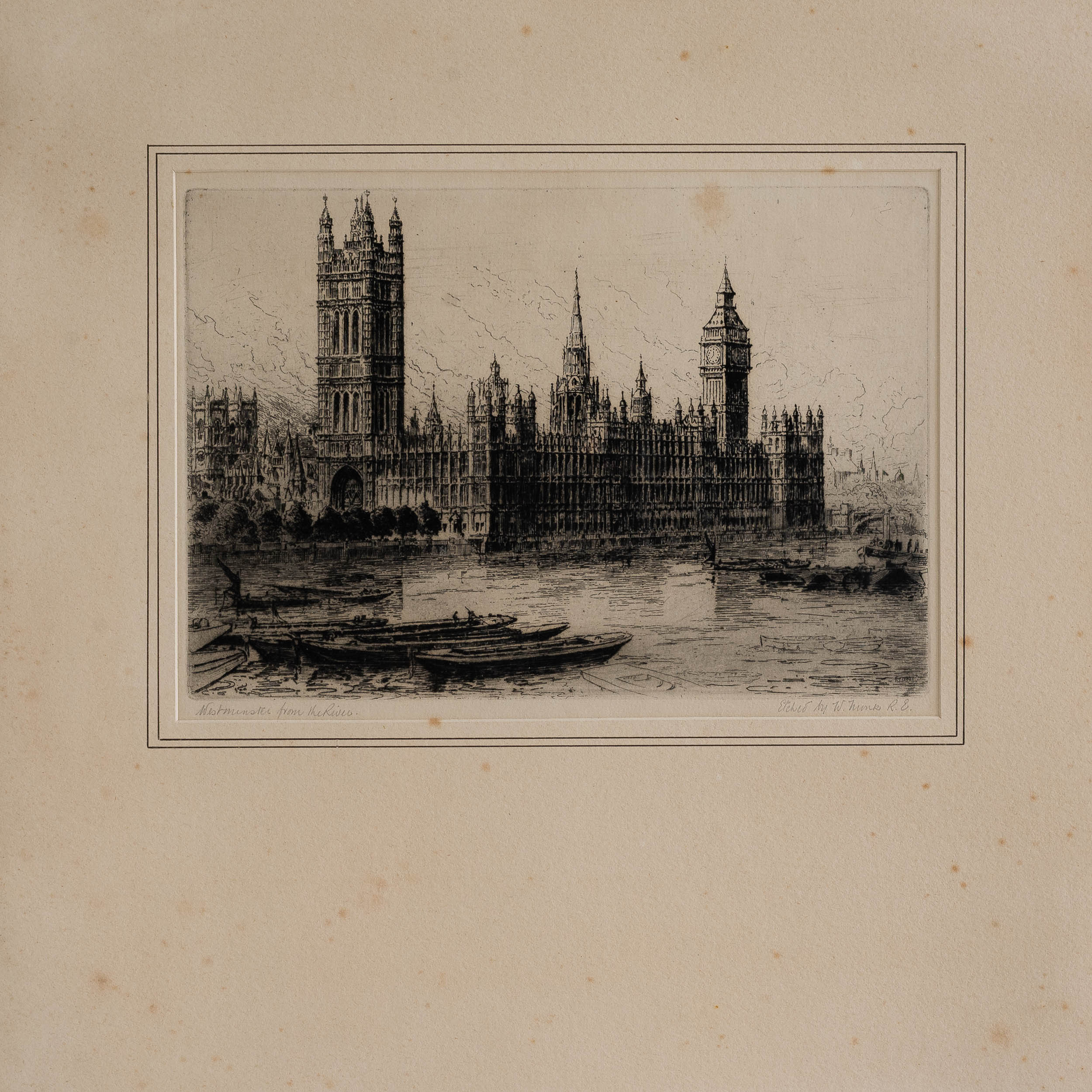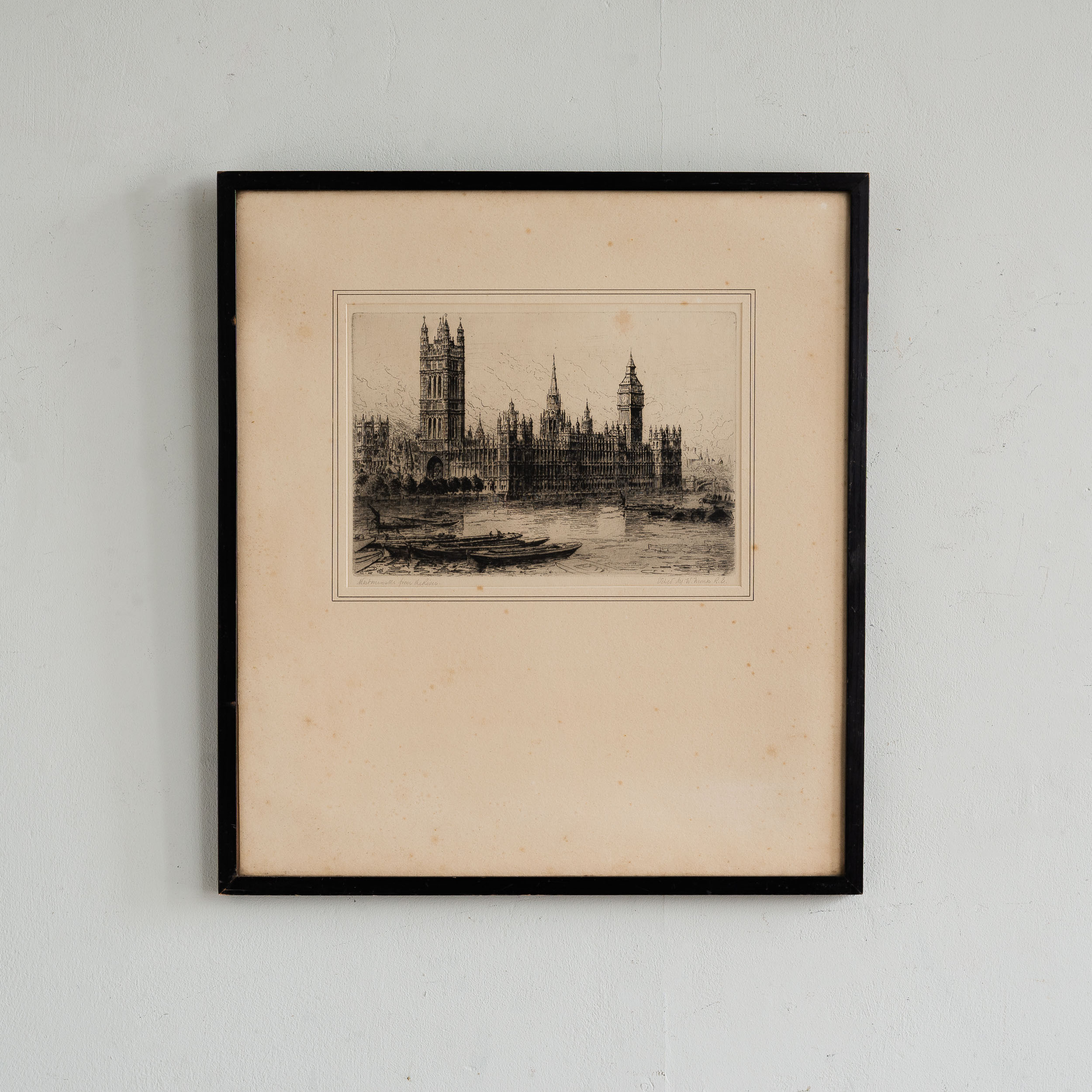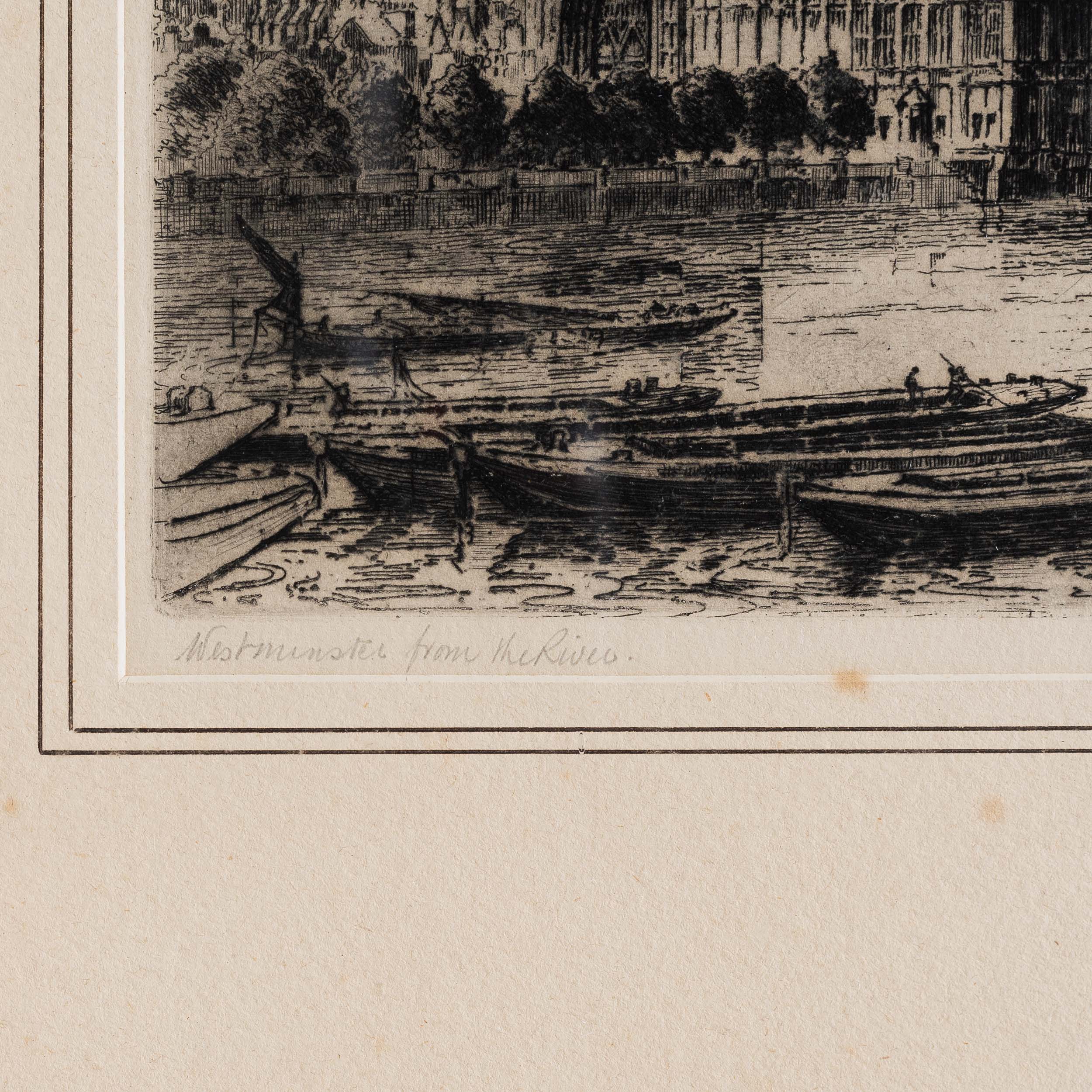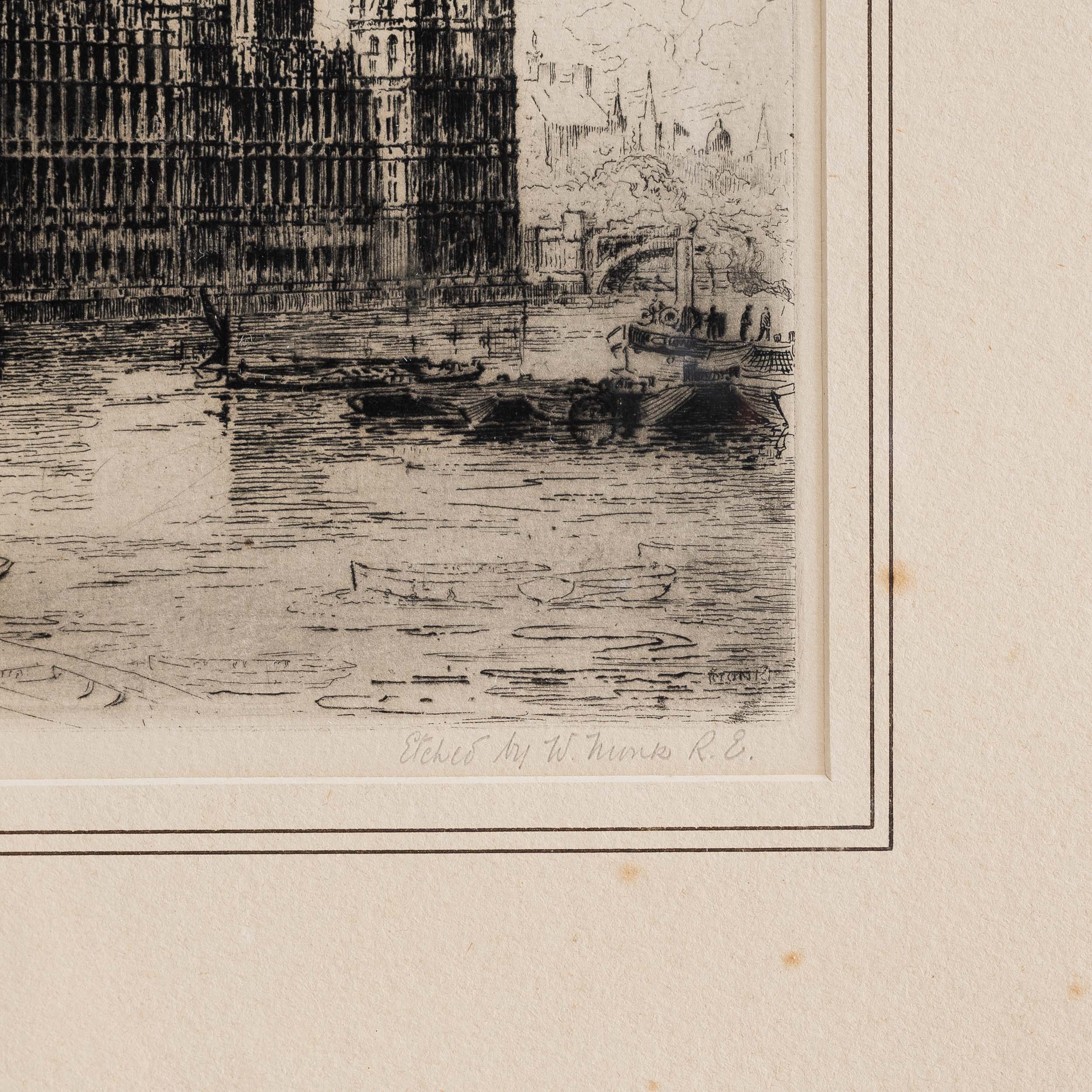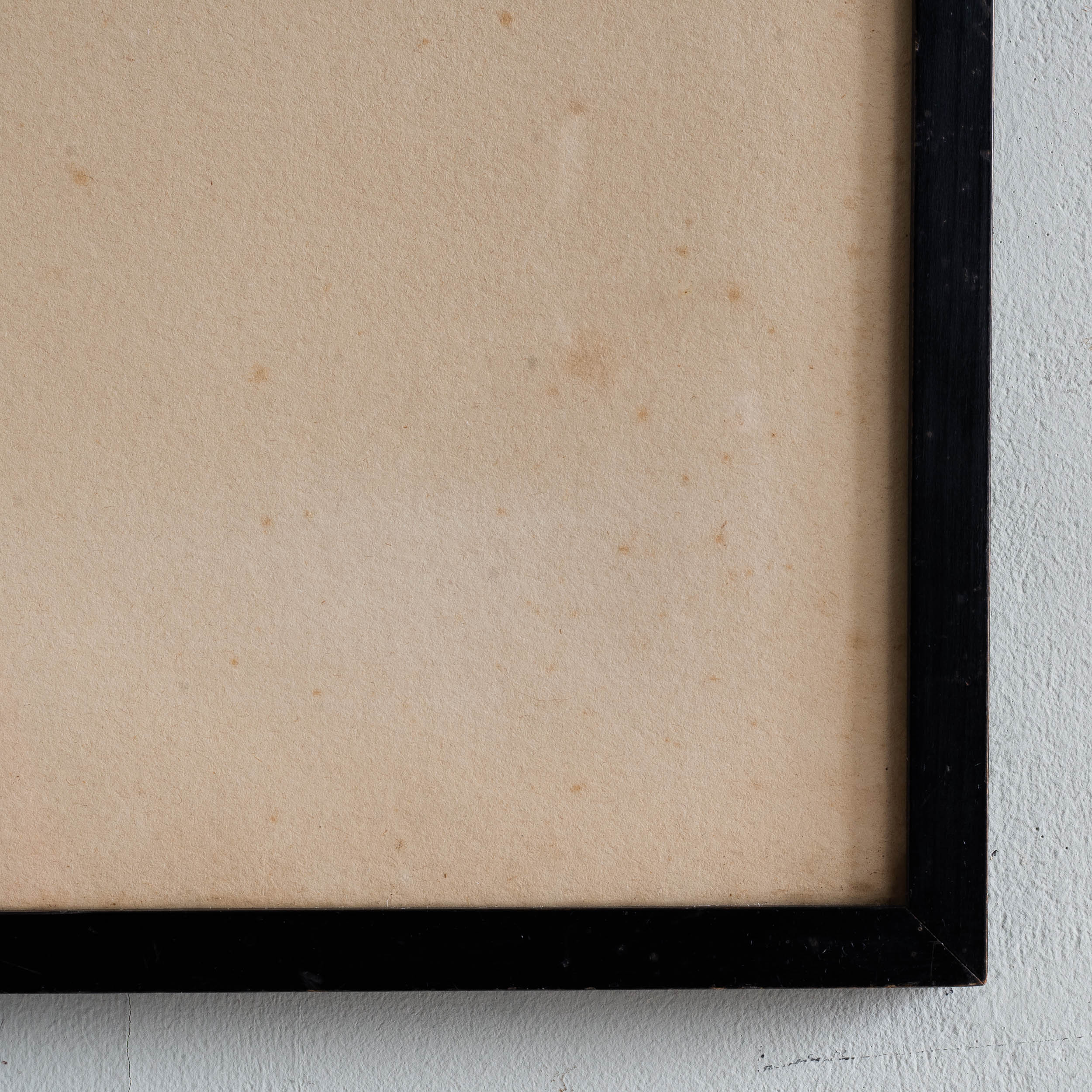Click and Collect – Please contact us to arrange collection or delivery of this item
Westminster from the River, William Monk
Framed and mounted black line etching by the artist-etcher, woodcut engraver and painter William Monk showing the Palace of Westminster from the river.
£170
SOLD OUT
Out of stock
‘One of England’s most famous architectural etchers of the late nineteenth and early twentieth century, professional artist William Monk… worked as an etcher, a woodcut engraver and a painter in oils and watercolours. Born in Chester, the son of gunmaker William Henry Monk, he studied art at the Chester School of Art and etching at the Antwerp Academy, Belgium. William Monk moved from Chester to London to work in one of the old Hogarth studios in 1892’
‘[Monk] created slightly over one hundred original etchings during his career: most being views of London, New York, Eton, Oxford, Winchester and Durham. Well-travelled, some of Monk’s best-known etchings are of New York and the Panama Canal. He also worked in Rome and Venice which he often depicted in watercolours. He was elected an Associate of the Royal Society of Painter-Printmakers in 1894 and a full member in 1899. He was a prolific exhibitor showing at the Abbey Gallery, Baillie Gallery, Beaux Arts Gallery, Fine Art Society, Grosvenor Gallery, Glasgow Institute of the Fine Arts, International Society of Sculptors, Painters & Gravers, Walker Art Gallery, Manchester Academy of Fine Arts, Royal Academy of Arts, Royal Institute of Painters in Water Colours and Walker’s Gallery. He was also a member of the Society of Graver-Printmakers in Colour and acted as Vice-President shortly before his death.’
‘Examples of William Monk’s work are held in the collections of the British Museum, Victoria and Albert Museum and the Imperial War Museum.’
– The Amersham Museum
Recently Viewed Items
-
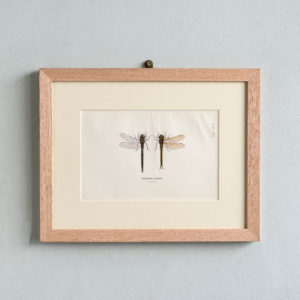
British Dragonflies (Odonata) by William John Lucas published by L. Upcott Gill of London, 1900,
£120 eachBritish Dragonflies (Odonata) by William John Lucas published by L. Upcott Gill of London, 1900,
William John Lucas FRES (1858-1932) was an authority on British Orthoptera, Odonata and Neuroptera. In his British Dragonflies, published in 1900, he described 39 British species. 'Plate XIII. Brachytron pratense'.£120 each

